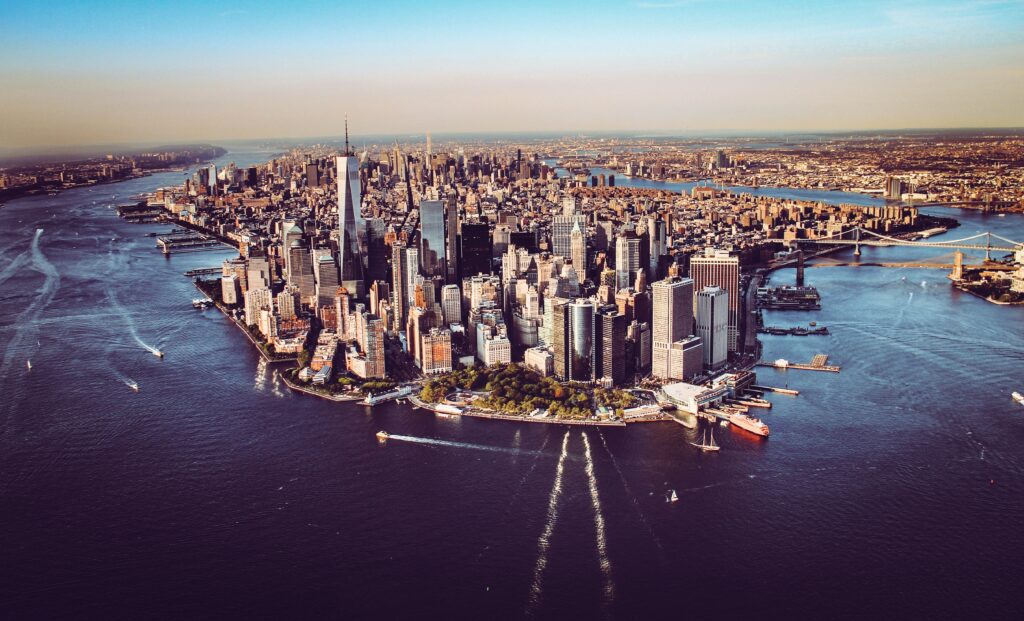Buildings account for the bulk of New York City’s greenhouse gas emissions. As part of its commitment to reduce citywide emissions by 80 percent in 2050, the city passed Local Law 97 of 2019. It affects buildings over 25,000 square feet. These “covered buildings” must report their emissions annually in the form of a building emissions report. The first report is due May 1, 2025 for most covered buildings, but not for certain rent or income regulated building or houses of worship which have different reporting requirements per section 28-321.3 of the Administrative Code. There are two types of civil penalties that apply, penalties for reporting late and penalties for exceeding emissions limit. The emissions limits will become more stringent every five years, with the first five-year period being 2024 through 2029. The aim of the law is to reduce emissions from covered buildings by 40% (relative to 2005 emissions) in 2030 and by 100% in 2050. New York State recently passed its Climate Leadership and Community Protection Act (CLCPA), which requires 70% renewable electricity by 2030 and 100% renewable electricity by 2040. See the CLCPA scoping plan here. Therefore, covered buildings can comply with Local Law 97 by improving efficiency and switching from fossil-fuel-based heating systems to electric ones.
There are approximately 50,000 covered buildings. Per a recent city report about 90% of covered buildings are within their 2024 emissions limits. That is, 10% of covered buildings are over limit for the 2024 – 2029 period. Roughly speaking those buildings with “F” and “D” benchmark grades per Local Law 84 of 2009, exceed limit now, in 2024, will incur emissions penalties in 2025, and should act now to reduce emissions to avoid further emissions penalties (for 2025 energy use) in 2026. Over 60% of covered buildings exceed their 2030 emissions limits. Buildings that currently have “C” and “B” benchmark grades should plan on completing emissions reduction improvements by then.
Failing to report has a penalty of 50 cents per square foot, per month (except for certain rent or income regulated building or houses of worship, which have a default and maximum penalty of $10,000). Emissions penalties, for those buildings that exceed limit will be $268 per ton of CO2 in excess of limit. Effectively, the emissions penalty will be a fraction of the energy costs for a building, with higher fractions for heavier emitters. For example, take a 30,000 square foot building that is a well over limit, and which pays about $10,000 per month in energy bills. That comes to $120,000 per year. The emissions penalty might be $40,000 per year in the first period, 2024 through 2029, and even higher in later periods. However, failing to report by May 1, and then submitting the report late on September 1, would see a reporting penalty of $60,000 in that year. The reporting penalties are stiff. Reporting late could be at least as costly as the emissions penalties, if not substantially more. If your building is up-to-date on its benchmarking, see this online calculator to estimate what its emissions limits are and what any associated emissions penalties will be absent any building efficiency/emissions improvements.
Buildings that are non-compliant (exceed their emissions limit) may mitigate their penalties via “Good Faith Efforts” that include being up-to-date on benchmarking per Local Law 84 of 2009, as amended – Energy Benchmarking, being compliant with Local Law 88 of 2009, as amended – Lighting Upgrades and Sub-meter Installation and any of the following:
- Demonstrating that work necessary to achieve compliance is currently underway by having a fully approved application and a permit issued for such work.
- Demonstrating that electrification readiness work is underway by securingan approved alteration application and a letter from a utility attesting to the work.
- Demonstrating that the building was previously under the emissions limit for the previous reporting year.
- Demonstrating that the building is a critical facility like a hospital whose services would be significantly impacted if they have to pay the full penalty.
- Demonstrating that the building has applied for or been granted an Adjustment pursuant to section 28-320.7 of the Administrative Code.
- Providing a Decarbonization Plan by May 1, 2025 that will bring the building into compliance with its 2024 limits no later than 2026 and with its 2030 limits no later than 2030, and demonstrating each year through 2030 that the work is proceeding on schedule.
EP engineering can prepare a building emissions report. We can also provide capital planning for compliance. Let us verify whether your building is compliant and if not, we can assess what it needs to get efficient, decarbonize, and comply!


